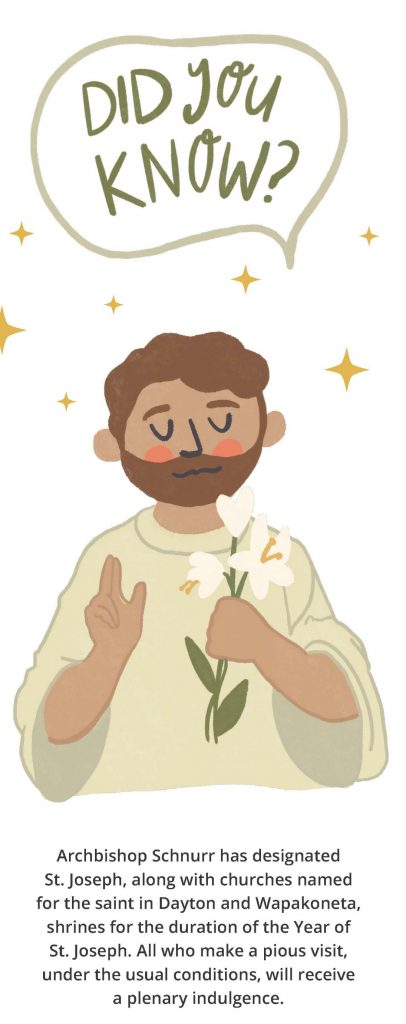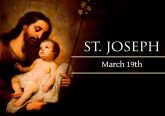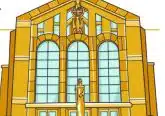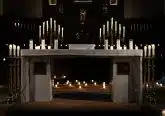Did you Know? St. Joseph Church North Bend
 Written by Gail Finke illustrated by Emma Cassani
Written by Gail Finke illustrated by Emma Cassani
“We have a beautiful modern church that was painted about a year ago. I wish every priest would come see what can be done with a modern church. Every square inch is painted. I wouldn’t call the style ‘historic,’ I’d call it expressive of faith. Instead of coming to a hall to meet, we’re worshipping God together.” – Father Andrew Umberg, pastor
Tippacanoe Park was the land donated to the church and used for parish recreation. It is the site of the current church and school.
Father Robert Leugers created a “tax stamp” fundraiser. Ohio Sales Tax Stamps were made redeemable in the 1960s by religious groups for 2-3% of face value.
200 volunteers sent out letters across the state asking for donations of tax stamps.
3,000-9,000 letters were sent every day; so many the Post Office created a pre- cancelled postage stamp for the parish.
$260,000 was redeemed from tax stamps (about half went to expenses).
$200,000 total cost of second church
5 Eagle Scout candidates helped design and construct the gardens.
There is an outdoor garden and Stations of the Cross across the street from the church. Art for each station is sandblasted on a Tennessee Crab Orchard stone boulder set in a landscaped strip. Matching stone benches and a walking path allow visitors to walk or sit as they pray.
St. Joseph Church on the banks of the Ohio River in North Bend exists because the town beat Cleves in a fundraising challenge. Bishop Purcell would allow only one church for both villages, and located it in the first town to raise enough money to build.
1860
parish formed
1886
property purchased for first church; railroad workers hired to construct it
1887
church dedicated
1911
First parish picnic held; still held today
1962
second church dedicated
2015
new sanctuary added
2017
picnic shelter finishes St. Joseph Gardens; prayer gardens and recreation grounds on the site of the old public high school, purchased through a parish fundraising campaign and created through volunteer labor.
When Father Andrew Umberg first talked about designing a symbol for the Holy Spirit to be painted above the crucifix (which is original to the first church), someone suggested adding an ancient symbol for God the Father, as well. The symbol is a triangle containing the four letters of God’s name in Hebrew, surrounded by clouds and lightening recalling when God showed His presence in a pillar of cloud. It can be seen in many medieval churches.
This article appeared in the March 2021 edition of The Catholic Telegraph Magazine. For your complimentary subscription, click here.













